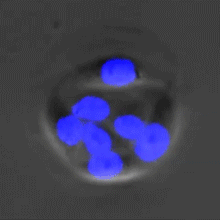Leadership
Biological Physics is applying physical concepts to model biological phenomena. Statistical physics approaches have been successfully applied to decode biological machinery at the molecular level. At a higher level, the challenges associated with biological networks, active systems far from equilibrium and multicellular systems come to the fore. These “complex systems” exhibit emerging properties showing spatio-temporal pattern that interplay with biological function. In this context image-based data are key to assess structure formation and feature dynamics. Modern quantitative imaging methods put these phenomena on record generating high-content data with massive information content. Inherent to its transdisciplinary nature biological physics, generally creates quite heterogeneous data sets to manage. Our domain Biological Physics and Soft Matter unites single researchers with interdisciplinary research clusters and provides interfaces across the disciplinary spectrum. A typical use case will have partially overlapping content with others domains within the consortium and with other consortia.



Especially, requirements of ontological services and metadata analysis for a FAIRlab, as well as federated repositories will have heterogeneous character demanding flexible and adaptable management by our task areas . We aim to build imaging data structures for behavior of living systems under standardized conditions. Two particular examples are the motile behavior of single cells and the collective motion of many cells. Image data build an interface between Biological Physics and Systems Biology and include a wide transdisciplinary aspect of conceptual tools in image analysis and pattern recognition.
Use cases
- BiolPh01 Prof. Dr. Joachim Rädler
- BiolPh02 Prof. Dr. Ana-Suncana Smith
- BiolPh03 Prof. Dr. Manfred Radmacher
- BiolPh04 Dr. Gerrit Vliegenthart
- BiolPh05 Prof. Dr. Hans-Joachim Krause
previous domain (Cold Plasma) | domain list | next domain (Dynamics, Statistical Physics and Soft Matter)